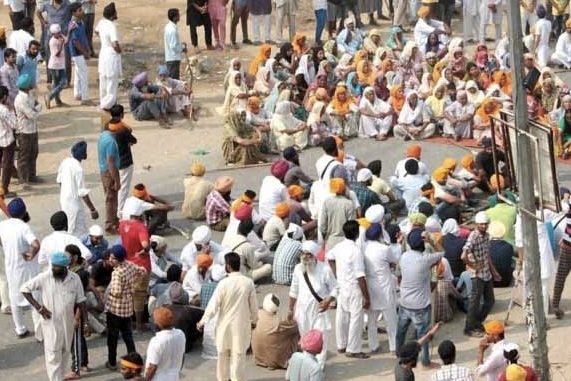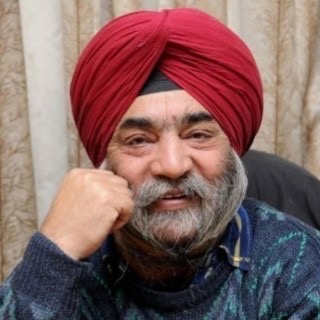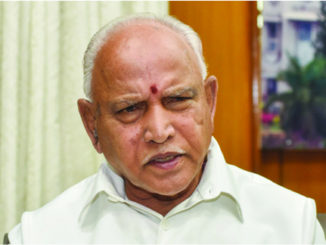

Punjab goes to polls in early 2022. Prabhjot Singh, a former Chief of the Bureau, The Tribune analyses the Punjab political scenario. The US and Canada have a sizeable number of people from Punjab, and they are keenly watching the happenings there.Publication of this extremely informative and analytical article is an attempt to keep the Punjabi community informed of the emerging and evolving political situation in the State of Punjab.-EDITOR
- Bedabi” at places of worship threatening to become an election issue
- Defections set the pace for political upheavals
- Malwa holds the reigns of Punjab politics
- 69 of 117 Assemble seats are in the Malwa region
- 13 of the 17 Chief Ministers come from the Malwa region
- Will Majha have a successor to Partap Singh Kairon?
A series of disturbing attempts to defile the sanctity of the places of worship, including the Golden Temple, and continuing political defections, have put Punjab on the boil. Change in command of the Punjab police and the subsequent registration of a case under the NDPS Act against Bikram Singh Majithia, a brother-in-law of SAD chief Sukhbir Singh Badal, are only a trailer of the events that are likely to unfold before the Election Commission formally announces the start of the battle of the ballot.
Political pundits are not surprised at the developments on the administrative front, but attempted sacrileges are disturbing for everyone. Onus is on the ruling party to maintain law and order by keeping a check on activities of those who want to vitiate the atmosphere. People of Punjab are known for their faith in democracy as the history would corroborate that even at times of turmoil, ballot was preferred to bullet.
Elections bring with them not only a hope of electing a new government but also a plethora of problems, including socio-economic and political, that put the statutory Election Commission to a litmus test. Political parties and candidates run to the commission claiming themselves to be the victims of vendetta and misuse of the official machinery by the ruling party.
Political and social sensibilities get blunted in the propaganda wars and the demand for replacing the police by paramilitary forces gains momentum. Whatever be the reasons or developments, elections are a trying time for everyone, including the voter as it is the time for him or her to reward or punish a candidate or even pose a trust in a debutant or new political party or alliance.
The battle lines get drawn and become sharper after the faces of the candidates and their party affiliations become clearer.
Punjab finds itself in an unprecedented situation with a displaced Chief Minister quitting the party, the legislature unit of which he headed for more than four years, to float his own party and join hands with the ruling party at the Centre. Interestingly, some of his loyalists, including a Minister in his own government, prefer the alliance partner than the party of his previous mentor.
Every battle of the ballot is different from the previous one. Each one brings up new issues besides some that remain evergreen. Major issues of the State, including transfer of Chandigarh, restoration of its riparian rights besides transfer of Punjabi speaking areas and the restoration of control of prestigious power projects, including Bhakra and Beas.
Historically, Punjab witnesses a fierce fight for control of power among its three predominant regions – the Majha, the Malwa, and the Doab – and the new entrant Puaadh. Of the three major geopolitical regions – Majha, Doaba and Malwa – that divide Punjab, the Malwa region has been ruling the State. The region has produced 13 of 17 Chief Ministers of the State so far. Besides, the region takes pride for claiming one of its sons, Giani Zail Singh, to rise to the highest office of the country, the President. The fourth and the smallest region – the Powadh – has some segment each of Patiala, Mohali and Fatehgarh Sahib in it has its solitary representation in the Chief Ministers’ Club through Charanjit Singh Channi, who also happens to be the first Dalit Chief Minister of this border State. Broadly speaking, it remains a part of Malwa. The Doaba comes next by producing not only the lone Punjab-elected Prime Minister (Inder Kumar Gujral) but also two Chief Ministers (Darbara Singh and Ram Krishan). The only consolation for Majha has been Partap Singh Kairon, who remained Chief Minister of Punjab in early 60s.
All major battles for political supremacy have been fought on the turfs of the Malwa region. The party that conquers the Malwa region takes over the reins of administering the State. Of 117 seats in the State Legislature, 69 – almost 60 per cent – are in the Malwa region while the other two regions – Majha (25) and Doaba (23) – share the remaining 48.
If one looks back at the history of these regions, they were primarily separated by two major rivers – Sutlej and Beas. Since in earlier times it was not easy to cross rivers, they served as geographical barriers. Each of these regions had not only different dialects or languages, lifestyle and socio-economic distinctions but was also ruled by different kings. Even today these regions continue to retain their distinct identity.
The Majha region mainly comprises of border districts of Amritsar, Gurdaspur, Pathankot and Tarn Taran while the Doaba has Jalandhar, Kapurthala, Hoshiarpur, Nawanshahr (Shaheed Bhagat Singh Nagar) and Ropar in it. The rest of the Punjab districts are in the Malwa region.
Generally speaking, each of the 23 Punjab districts has five assembly segments while each of 13 Lok Sabha constituencies has nine assembly segments each.
The dominance of Malwa in politics is reflected in the socio-economic progress the State has made since 1947 in general and after the 1966 re=organization in particular. Bathinda, the heartland of the Malwa, which was once tottered by sandy dunes, is now the fastest growing city in North India. Dotted with a multi-crore oil refinery, three thermal plants, a couple of universities, top of the shelf specialist hospitals including All India Institute of Medical Sciences, for treatment of cancer and other diseases, ultra-modern airport and several spinning, ginning and cotton mills, Bathinda, the cotton belt, has become the most vibrant political hub of the State.
With development come the problems. It is the Malwa region that has also come to be known as the cancer belt where the incidence of this deadly disease has witnessed multifold increase. Growing indebtedness has resulted in an alarming increase in suicides by farmers and members of their families.
Parkash Singh Badal, five-time Punjab Chief Minister, had been the tallest political leader who came from the Malwa region. His successor, Capt Amarinder Singh till recently of Congress, too, is a son of the Malwa belt. Incidentally, the lone woman Chief Minister of the State, Rajinder Kaur Bhattal, also hails from this politically dominant region.
Other prominent political leaders produced by the Malwa region include Gian Singh Rarewala (Chief Minister of erstwhile Pepsu State), Surjit Singh Barnala, Sant Harchand Singh Longowal, Giani Zail Singh, Harcharan Singh Brar, Perneet Kaur, Sukhdev Singh Dhindsa, Balwinder Singh Bhunder, Bhagwant Mann and Manpreet Singh Badal. It may be mere coincidence that no Akali CM has come from either the Doaba or the Majha region.
The strength of both the Shiromani Akali Dal and the Congress lies in the peasantry of the Malwa region. Analysis of results of the previous Assembly elections would clearly bring out the political clout the region enjoys. Also interesting this time would be how the farmers owing allegiance to Samyukat Kisan Morcha (SKM) vote.
In 2007, Congress won 37 of its 44 seats in the Malwa region alone while Akalis won only 19 of their 49 seats from here. The reason was that farmers in general and cotton growers in particular acknowledged some of the actions of the previous Congress government of Capt Amarinder Singh that benefitted them greatly. These included the introduction of BT Cotton.
Subsequently in 2012, the Akalis wrested the initiative and got 33 of their 56 seats from Malwa. But Congress got it back in 2017.
Coming to other regions, Majha, dominated by religiosity, has remained an Akali stronghold. In the 2007 elections, Akalis got 17 seats against just three by Congress while in 2012, Congress improved its tally and won eight seats against 12 by Akalis. The region went Congress way in 2017. Sukhjinder Randhawa, Sukh Sarkaria, OP Soni,besides Navjot Sidhu all represented the Majha in the outgoing Assembly.
Among the tall Akali leaders from the Majha belt include Jeewan Singh Umranangal (who later formed his own Dal), Mohan Singh Tur, Ranjit Singh Brahmpura and now Adesh Partap Singh Kairon – grandson of Partap Singh Kairon. It was this region that was hit by militancy most.
Ranjit Singh Brahmpura quit the SAD and is now a senior leader in Sanyukt Akali Dal of Sukhdev Singh Dhindsa. It was Majha region that gave former IPS officer and head of a faction of Akali Dal, Simranjit Singh Mann, a massive win from Tarn Taran Lok Sabha seat. Subsequently, Mr Mann shifted his base to Malwa and represented Sangrur. The Doaba region that has a large population of overseas Punjabis, too, supported Akalis more than Congress in the past two elections. Akalis won 13 seats in 2007 and 11 in 2012 while Congress tally was four in 2007 and six in 2012. It went in a big way in favor of Congress in 2017. The Congress success in the Doaba region was mainly in seats reserved for the Dalits as it had thrown up Master Gurbanta Singh and later his sons Ch Jagjit Singh and Ch Santokh Singh (sitting MP) besides Joginder Singh Mann (belonging to former Union Minister Buta Singh). Prominent Akali Dalit leader to represent the Doaba region was former Deputy Speaker of Lok Sabha Charanjeet Singh Atwal while BJP has Som Parkash representing the region in Parliament now.
(The writer is the former Chief of Bureau of The Tribune newspaper)





Be the first to comment